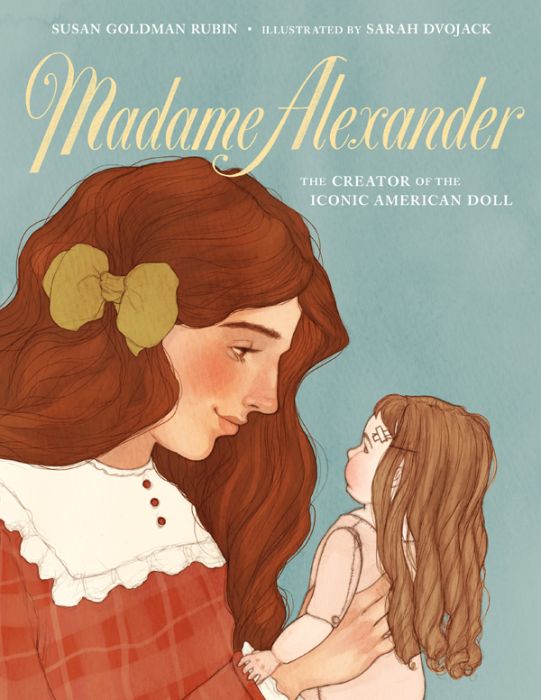
Madame Alexander: The Creator of the Iconic American Doll
By Susan Goldman Rubin
Illustrators
Illustrated by Sarah Dvojack
Edition
By Susan Goldman Rubin
Hardcover edition
Publisher Macmillan Imprint Feiwel & Friends ISBN9781250138590
Madame Alexander: The Creator of the Iconic American Doll
 21.24
21.24
In stock
SKU
9781250138590J
A picture book biography about Beatrice Alexander, founder of the iconic Madame Alexander doll.
With beautiful, vivid art by Sarah Dvojack, author Susan Goldman Rubin tells the powerful story of savvy, feminist entrepreneur Beatrice Alexander, who founded the Madame Alexander Doll Company and became one of America’s most celebrated toy makers.
Beatrice's family ran a doll hospital in their home in New York's Lower East Side, where she grew to love fixing and making dolls. Beatrice dreamed of becoming an artist, but her family couldn’t afford to send her to sculpting school. She never stopped dreaming, even as she stayed home, graduated from high school, and got married. When WWI broke out, she made cloth dolls modeled after nurses to support the war effort. After the war, Beatrice founded Madame Alexander, creating some of the first plastic and collectible dolls, dolls that never break.
With beautiful, vivid art by Sarah Dvojack, author Susan Goldman Rubin tells the powerful story of savvy, feminist entrepreneur Beatrice Alexander, who founded the Madame Alexander Doll Company and became one of America’s most celebrated toy makers.
Beatrice's family ran a doll hospital in their home in New York's Lower East Side, where she grew to love fixing and making dolls. Beatrice dreamed of becoming an artist, but her family couldn’t afford to send her to sculpting school. She never stopped dreaming, even as she stayed home, graduated from high school, and got married. When WWI broke out, she made cloth dolls modeled after nurses to support the war effort. After the war, Beatrice founded Madame Alexander, creating some of the first plastic and collectible dolls, dolls that never break.
More about Madame Alexander, with photographs. Bibliography. Full-color illustrations were drawn traditionally and colored digitally.
|
Standard MARC Records Cover Art |
Biography Elementary Plus (Grades 1-4)
Biography Elementary Plus
Biography Elementary Plus (Grades 1-4)
For Grades 1-4
This 14 book collections offers beginning readers fascinating biographies and compelling personal stories that provide a view into history or perspective on the issues of our times.
14 books per Year
$282.52 per Year
Interests
Biographies, Nonfiction, Science/STEAM





